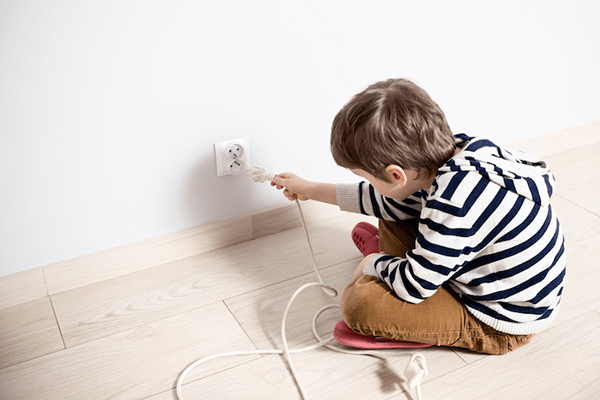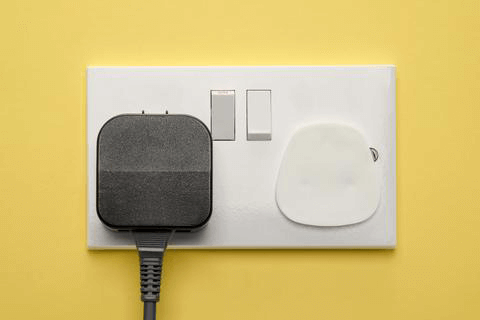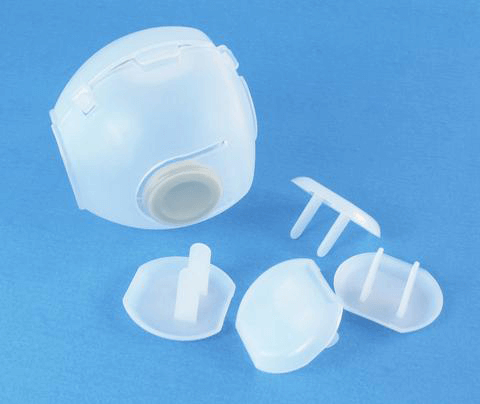How to Childproof Electrical Outlets, Cords and More
If you look around your home, chances are electrical products are everywhere. From laptops and televisions to lamps and appliances, electricity is an integral part of your life—whether you like it or not.
 And most of the electrical items in your home aren’t made with your children’s safety in mind. According to the National Fire Protection Association (NFPA), electrical outlets affect 2,400 children each year. So you’ll need to take safety into your own hands when it comes to keeping your children out of harm’s way.
And most of the electrical items in your home aren’t made with your children’s safety in mind. According to the National Fire Protection Association (NFPA), electrical outlets affect 2,400 children each year. So you’ll need to take safety into your own hands when it comes to keeping your children out of harm’s way.
With these tips, find out what will work best for your home and family, and you’ll be well on your way to childproofing the electrical outlets, cords and even appliances in your home.
1. Outlets
Caps
 If you’re on a budget, electrical outlet caps are the perfect option for childproofing your entire home — and they only cost a few bucks. Most are made of a non-grip plastic and aren’t easy for the little ones in your home to pull out of the socket.
If you’re on a budget, electrical outlet caps are the perfect option for childproofing your entire home — and they only cost a few bucks. Most are made of a non-grip plastic and aren’t easy for the little ones in your home to pull out of the socket.
However, the only downside is that you will need to remove the plugs each time you want to use the outlet, place the caps out of your children’s reach, and ensure you place it back in the outlet afterwards.
Sliding plates
Sliding plate covers are more expensive, but they’re safer to use than outlet caps. Plus, they’re easy to install.
All you’ll need to do is replace your existing plate covers with a screwdriver. When you want to use the outlet, just slide the outlet across. And when you’re done, the sliding plate will return to the original position.
And since sliding plate covers are spring-loaded, your outlets are always protected. The one downside? You’ll spend a bit more money.
Outlet covers
 Outlet covers sit over your existing outlet, and have more benefits than just childproofing your outlets. They also prevent your children from pulling out any cords that are attached.
Outlet covers sit over your existing outlet, and have more benefits than just childproofing your outlets. They also prevent your children from pulling out any cords that are attached.
This option is perfect for anything that should be permanently plugged in, like a television. Plus, it’s easy for an adult to remove, yet difficult for little kids.
2. Power Strips
Strip covers
A strip cover is essentially a shield that sits over a power strip that has more than one item connected to it. Like outlet covers, strip covers not only prevent your children from reaching the outlet itself, but also pulling out the items that are connected.
There is a downside to strip covers: the gap for the cords. Most are made for bigger or fatter cords, giving a bit of a space for children to stick their fingers inside.
One option is to mask the area with electrical tape to prevent this from happening, or placing it in an area that’s out of reach, like on top of an entertainment center.
3. Extension Cords
Cord covers
Extension cords have many risks, but when it comes to kids who are learning to walk, toddlers tripping over the cords can be the biggest hazard in your home.
Surely, the best way to avoid injury by extension cords is to avoid using them altogether. But that’s not always feasible. Instead of having exposed cords throughout your home, you can try duct cord covers.
Duct cord covers are made of rubber and can usually cover up to 60 inches. Most come with holes that can house more than one cord for the areas that have multiple electronics.
These cord covers sit flush to the floor, can be cut to any length, and include a grip to prevent slipping and sliding.
Cord shorteners
At one point or another, every homeowner has experienced a cord that’s just way too long. This can be particularly hazardous to children if they get the cord wrapped around their arm or leg, and trip while an item, like a lamp, falls on top of them.
To prevent potential injuries, try an electrical cord shortener. Cord shorteners are very easy to use, and they’re durable. Plus, electrical cord shorteners prevent the possibility of electric shock and they’re very affordable.
Determine the area of the cord you’d like to shorten, place it inside the slot on the side, and twist to obtain your desired length for the cord.
4. Appliances
Fridge locks
The fridge is always a home’s most-visited appliance, so be prepared for when your children figure out where all the goodies live in your home.
To prevent a mess from happening (or your children from eating something they shouldn’t), try fridge locks.
Fridge locks come in many styles, so choose the one that’s right for your needs. For example, a button strap lock holds standard fridge doors closed. They’re released with a push of a button and automatically lock when the door closes. However, the glue that attaches the lock to the door may give up over time.
Clip strap locks are perfect for side-by-side refrigerator doors. The strap is very simplistic and easily pops off. The only downside is that the strap will need to be out of children’s reach, and you’ll have to use both hands when you want to get into the fridge.
Stove knob covers
Many stoves have knobs that are on the backside of the stove, but if yours has the knobs on the front, you’ll need knob covers to childproof the stove in your kitchen. Especially if you have a gas stove, a disaster can easily occur in your home if your children have easy access to the knobs.
Stove knob covers prevent your children from turning on your stove. These knobs are made to place over your existing burner knobs to prevent them from being easily moved. And for parents, most designs blend in well with existing décor and are removable and reusable.
Enlist a professional to make your home’s electrical components safe for your family >




